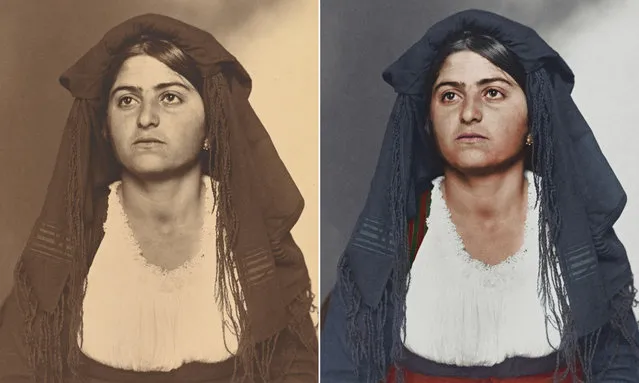
Many of the 12 million people who entered the US through New York’s Ellis Island wore traditional dress from their homelands. The early 1900s images by chief registry clerk Augustus Francis Sherman have been brought to life by colorists at Dynamichrome. The photos will form part of a book called The Paper Time Machine, by Wolfgang Wilding and Jordan Lloyd, which is currently being crowdsourced. Here: An Italian woman circa 1910 wearing a traditional homespun dress and shawl. (Photo by Augustus Francis Sherman/New York Public Library/The Guardian)
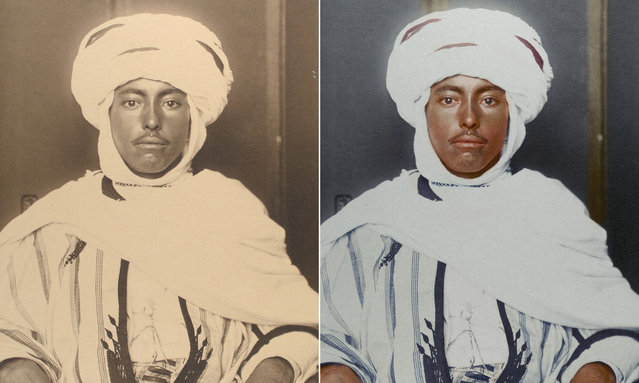
An Algerian man circa 1910 wearing a kaftan tunic and a kufiya, which is a square of fabric folded into a triangle and held upon the head by a circlet of camel hair. (Photo by Augustus Francis Sherman/New York Public Library/The Guardian)
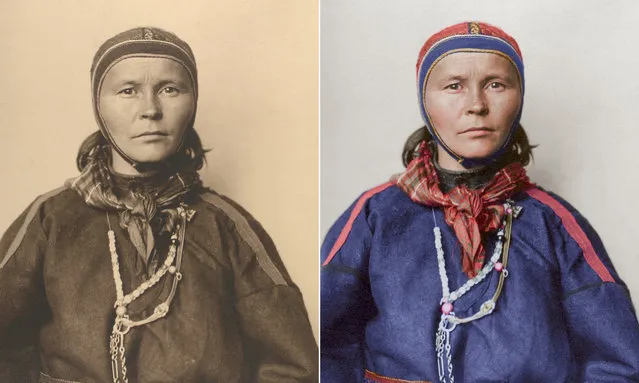
A Laplander circa 1910 wearing the traditional costume of the Sami people inhabiting the arctic regions spanning from northern Norway to the Kola peninsula in Russia. (Photo by Augustus Francis Sherman/New York Public Library/The Guardian)
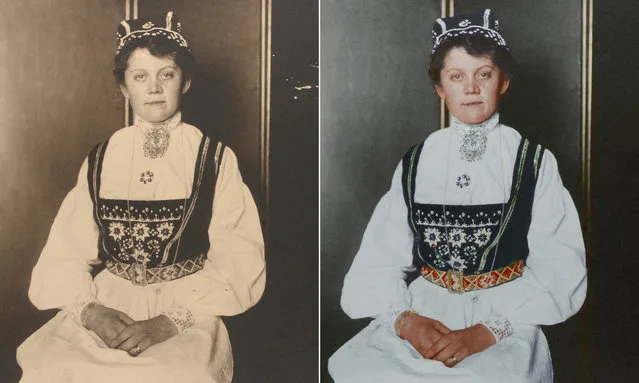
A Norwegian woman wearing traditional dress with a hair covering to indicate her marital status. (Photo by Augustus Francis Sherman/New York Public Library/The Guardian)
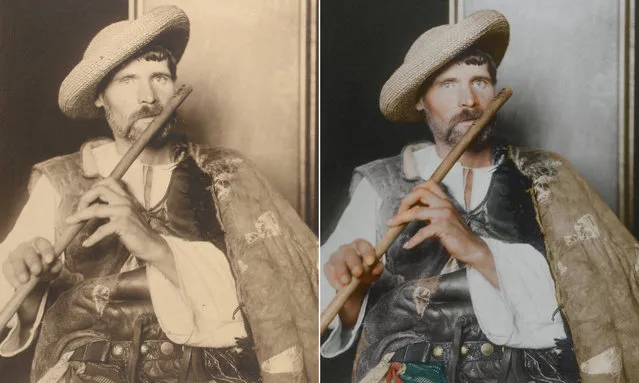
A Romanian piper circa 1910 wearing an embroidered sleeved sheepskin coat. (Photo by Augustus Francis Sherman/New York Public Library/The Guardian)
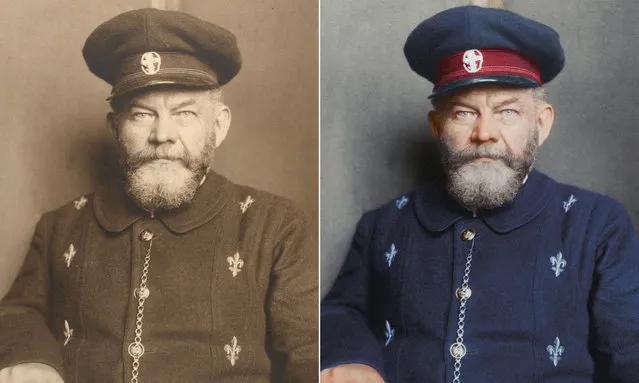
A Danish man circa 1909 wearing a wool jacket with silver buttons indicating his wealth and origin. (Photo by Augustus Francis Sherman/New York Public Library/The Guardian)

A Dutch woman circa 1910 wearing a large bonnet, one of the most recognizable aspects of Dutch traditional dress. It was usually made of white cotton or lace and sometimes had flaps or wings, and often came with a cap. (Photo by Augustus Francis Sherman/New York Public Library/The Guardian)
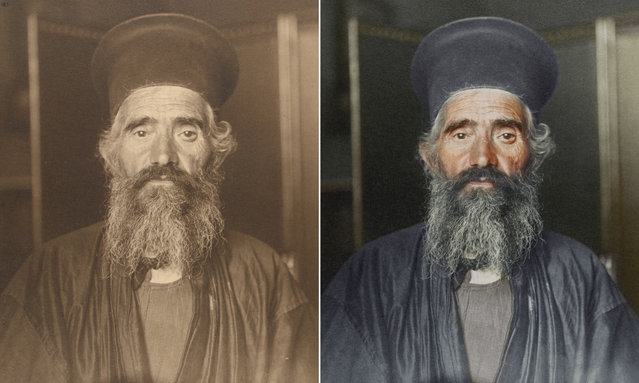
The Rev Joseph Vasilon, a Greek Orthodox priest circa 1910, wearing an ankle-length cassock and a stiff cylindrical hat called a kalimavkion, worn during services. (Photo by Augustus Francis Sherman/New York Public Library/The Guardian)
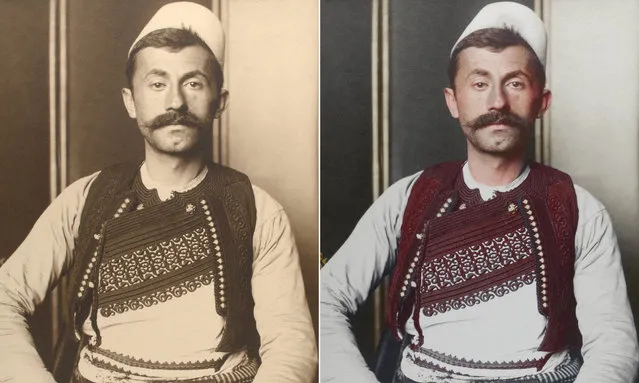
Albanian soldier circa 1910 in a brimless felt cap is known as a qeleshe, whose shape was largely determined by region and molded to one’s head. His vest is decorated with embroidered braids of silk or cotton; its color and decoration denote the region where the wearer is from and his social rank. (Photo by Augustus Francis Sherman/New York Public Library/The Guardian)
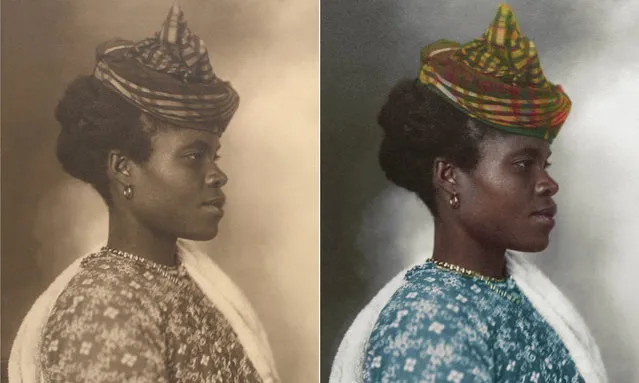
A Guadeloupean woman circa 1911 wearing traditional costume, including an elaborate tartan headpiece that can be traced to the Middle Ages. (Photo by Augustus Francis Sherman/New York Public Library/The Guardian)
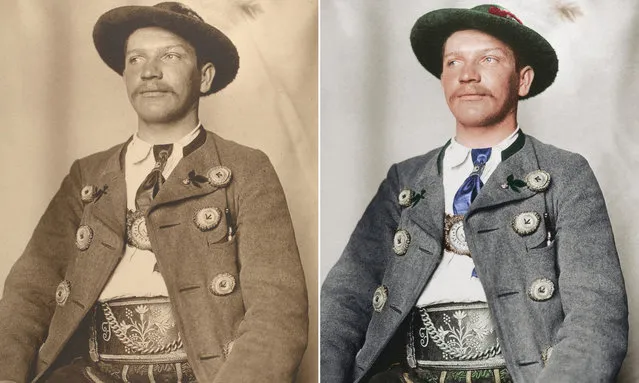
A Bavarian man circa 1910 dressed in the leather breeches of the alpine regions of Germany, known as Lederhosen, and a wool jacket with horn buttons. (Photo by Augustus Francis Sherman/New York Public Library/The Guardian)
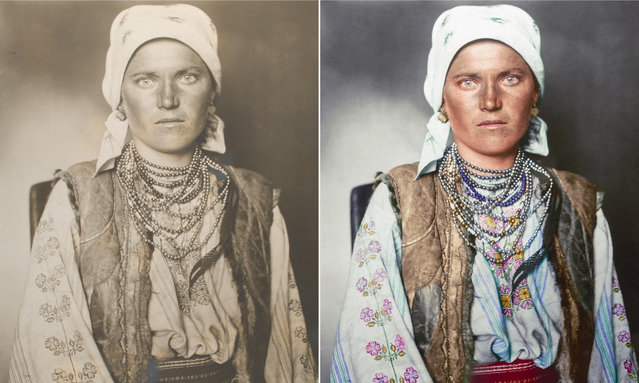
A Ruthenian woman circa 1906 from the region historically inhabiting the kingdom of the Rus, incorporating parts of modern-day Slavic speaking countries. Her outfit consists of a shirt and underskirt made from linen embroidered with traditional floral-based patterns. (Photo by Augustus Francis Sherman/New York Public Library/The Guardian)
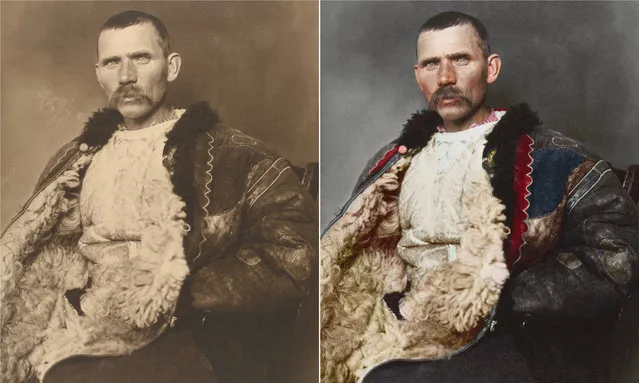
A Romanian shepherd circa 1906 wearing a traditional shepherd’s cloak known as sarică, made from three or four sheepskins sewn together with the fleece facing outward. The garment was generally extended to below the knee and could be used as a pillow when sleeping outdoors. (Photo by Augustus Francis Sherman/New York Public Library/The Guardian)
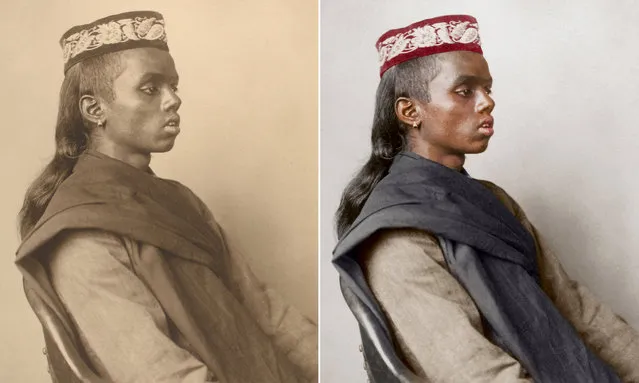
A Hindu boy circa 1911 wearing a cap – known as a topi and popular among Muslim communities – and a handspun prayer shawl. (Photo by Augustus Francis Sherman/New York Public Library/The Guardian)
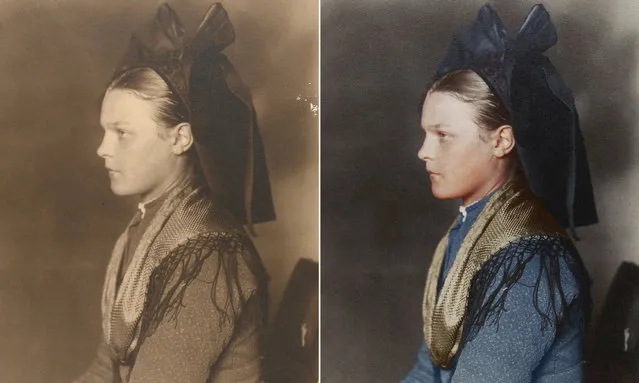
An Alsace-Lorraine girl circa 1906 hailing from the Germanic speaking region of Alsace, which is in modern day France. The large bow, known as a schlupfkàpp, was worn by single women. The bows signified the bearer’s religion: black for Protestants, while Catholics favored brightly colored bows. (Photo by Augustus Francis Sherman/New York Public Library/The Guardian)
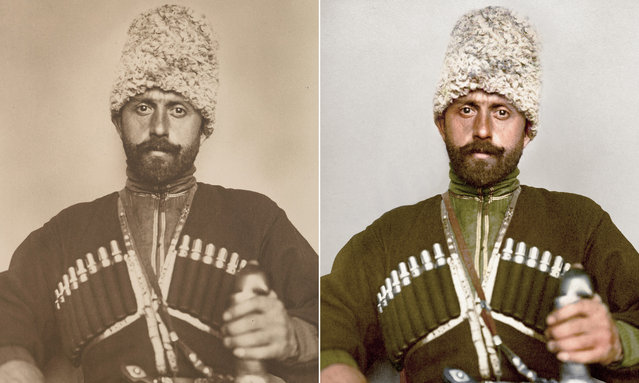
A Cossack man – most likely from the Ussuri Cossack host – characterized by his papakha, the lamb wool hat and the green cherkesska coat accented in yellow. The coat features a number of pouches to house gazyri, traditionally metal powder tubes for early firearms. (Photo by Augustus Francis Sherman/New York Public Library/The Guardian)
03 Oct 2016 09:15:00,
post received
0 comments
